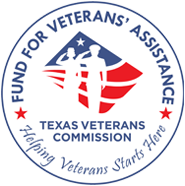For aging veterans, the Older Americans Act of 1965 provides continuing grant support for “the organization and delivery of social and nutrition services” for U.S. citizens over 60. But for veterans under age 60, hunger can be particularly severe, because few if any programs are available.
An estimated 2 million veterans battle food insecurity.
The Center on Budget and Policy Priorities (CBPP), which helps keep national policymakers aware of the needs of lower-income earners, recently published information that specifically focused on hunger in America. In one report, the Center stated that approximately two million veterans live in households that struggle to put food on the table and have found it necessary to turn to SNAP (formerly food stamps) at some point during the past 12 months. And an estimated 2.4 million households with veterans receive assistance from food pantries that are part of the Feeding America network. [1]
In another report, the CBPP noted that in Texas, there are 119,200 vets who live in households that must rely on SNAP (food stamps), and most of these veterans tend to be younger (57 percent being under age 30, about 35 percent between 30 and 60, and 9 percent over 60). Yet, due to recent budget cuts, many of these vulnerable soldiers who sacrificed so much during multiple tours in Afghanistan and Iraq are now finding that even SNAP assistance has been curtailed to only three months. This hit the underserved segment of younger veterans particularly hard―an estimated 60,000 military veterans, who struggle daily to find work. And there are still no programs that routinely deliver hot meals to those in need under age 60.
Many of these younger vets are battling post-traumatic stress disorder (PTSD), traumatic brain injury, other disabilities and addictions. They are also often too proud or ashamed to seek help for daily sustenance. We should be honoring these valiant heroes with bounty and blessings, but unfortunately, many have fallen into the darkest crevasses of scarcity and sorrow―suffering in silence and isolation.
In 2015, The Journal of Public Health Nutrition published by the University of Minnesota School of Public Health reported that about 25 percent of veterans who served in Iraq or Afghanistan have difficulty obtaining adequate food―compared to 14 percent in the general population. This study also found that veterans who are most likely to face challenges obtaining regular meals are young, not married or partnered, not employed or have lower incomes, have children, and/or left the service at lower military pay grades.
In sum, our nation is not taking care of our veterans. We can and should be treating them better.

